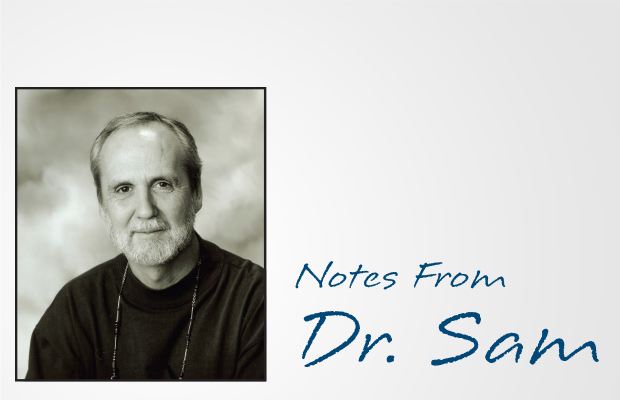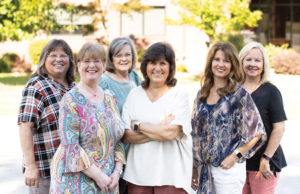Notes from Dr. Sam

Good Day,
I hope this note finds you well.
In my first book, We All Hear Voices, Jack, the cook at Moon’s Bar and Grill, has the gift of synesthesia; he tastes shapes and sees sounds. He is fascinated by the stock car track across the road from the café and becomes absorbed in the brightly colored cars as they maneuver around the oval track. With the stimulation of the sights and sounds of the stock car track, Jack returns to the café and creates great banquets of food. Soon, Moon’s Bar and Grill is considered the best little eatery in this part of the mid-South.
Jack’s gift of synesthesia is technically defined as a union or combining of the senses. Prior to the 1990’s, this gift was thought to be rare but with the advent of the Internet it has become clear that it is reasonably common. The most common form of synesthesia goes by the name of grapheme; these folks see numbers or letters in color. Most authorities have estimated that this trait is far more common in artists, writers, musicians and scientists.
This gift has been known to science for well over three hundred years, but it wasn’t until the early twentieth century and the advent of Kandinsky, a Russian born painter, that synesthesia began to garner significant attention. He is credited as being the father of modern abstract art and helping to shape many of our ideas about the relationships among color, form, and emotion.
Prominent artists, writers and scientists have acknowledged that they have this gift. Franz Liszt and Rimsky-Korsakov both discussed the impact of synesthesia on their music. Duke Ellington often spoke of the ‘blue and yellow’ sounds emanating from the horn section of his orchestra. In the early 1920’s, Georgia O’Keeffe painted a series of delightful pieces that she entitled “Pink and Blue Music.” John Mayer, the popular guitarist, has discussed synesthesia and its impact on his music.
The first major motion picture that featured elements of synesthesia was the 1940s Disney movie of fantastic realism, Fantasia; the whale song and floating keyboard are right out of Kandinsky. Another landmark movie with clear synesthetic elements is the movie Close Encounters of the Third Kind; the climactic scene where the mother ship lands and communication begins is a primer in cross-modal communication.
Scientists working in the field feel that though we may not all be born with a genetic gift as dominant as Jack’s, all of us have some “cross-modal” potential. What is ‘loud’ about a bright red shirt? What is ‘sharp’ about cheddar cheese? What is ‘bitter’ about a cold wind? Each of these questions involves a synesthetic metaphor. Where did we come up with these metaphors? Research suggests that as young infants we all have the capacity to cross the normal lines of sight, hearing, taste, smell and touch. As we grow, most of this is pushed into the background; but what happens if these lines blur in the materials to which we are exposed as small children? Is it possible our grandchildren will be synesthetes? Is it possible they already are?
Have a good journey and stay safe.
Sam
Dr. Sam Taggart is a retired doctor/writer/marathon runner in practice in Benton for the last 45 years. He recently released Country Doctors of Arkansas, published by the Arkansas Times. His other books, The Public’s Health: A narrative history of health and disease in Arkansas, With a Heavy Heart and We All Hear Voices are available at your local booksellers or online at amazon.com.










0 comments